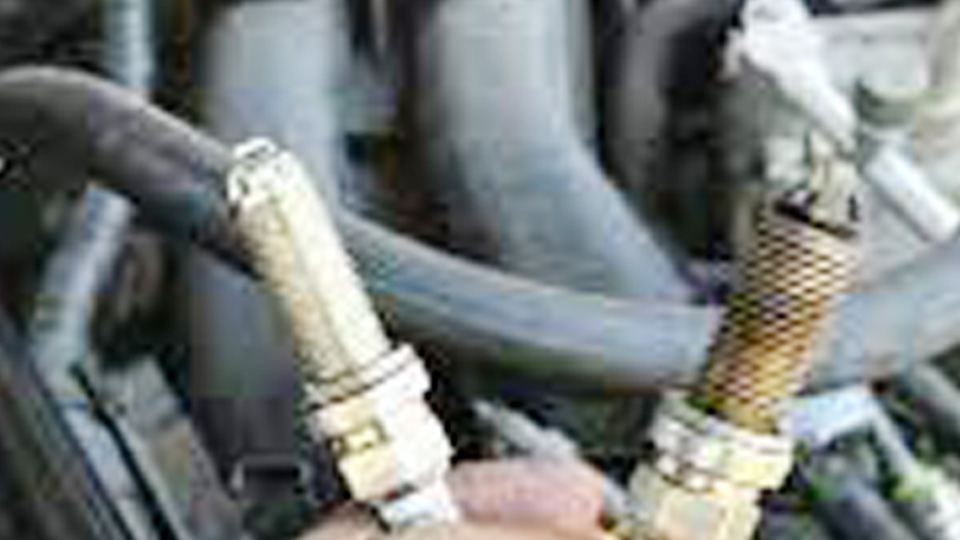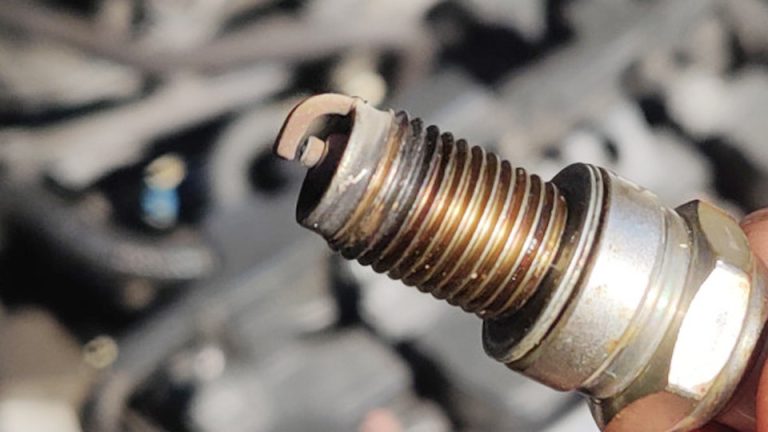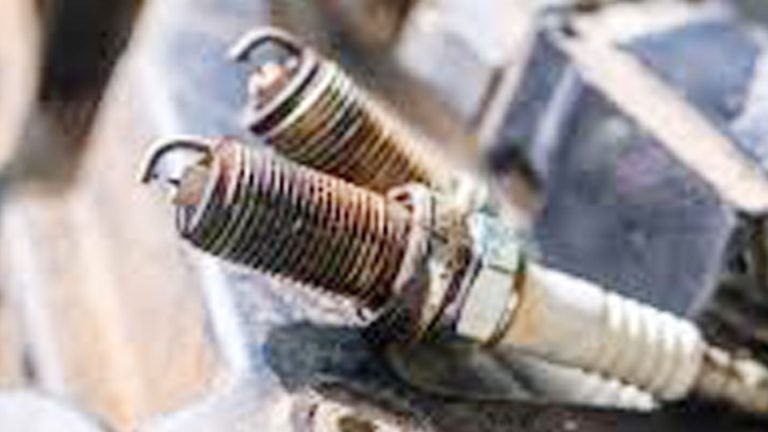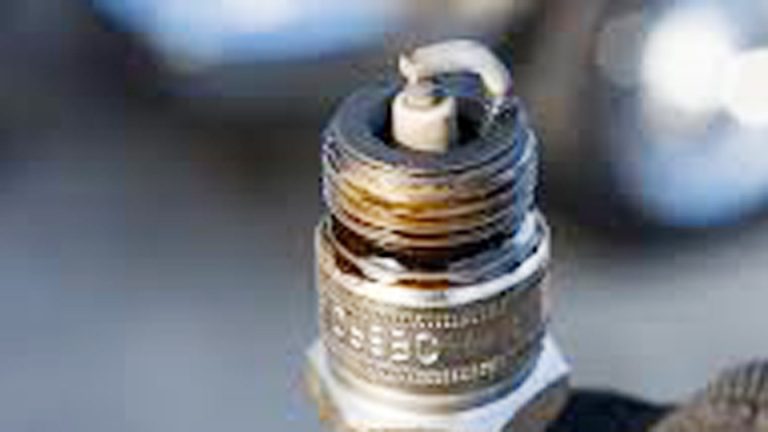It’s a scenario I see all the time in my garage: a car rolls in with a shaky idle, strange engine noises, or hesitation when you hit the gas. The owner tells me they just replaced the spark plugs, but the engine keeps misfiring. That’s when the question pops up: “Why does my car keep misfiring after changing spark plugs?” Spark plugs might seem like a small, simple part, but they play a huge role in engine performance and reliability.
I’ve replaced these countless times, and one mistake I see car owners make is rushing the installation or overlooking related components. Getting it right not only keeps your car running smooth but also saves you money and avoids bigger repairs down the road.

Image by reddit
Engine Misfires and Their Impact
Let’s start with the basics because even seasoned DIYers sometimes overlook the fundamentals. An engine misfire happens when one or more cylinders fail to combust properly. It’s like your engine is skipping beats, and that can feel like a shudder, a loss of power, or even a popping sound from the exhaust.
What Exactly Is an Engine Misfire?
In simple terms, a misfire is a failure in the ignition, fuel, or compression in a cylinder. Spark plugs play a key role here—they provide the spark that lights the fuel. But they’re part of a bigger system including ignition coils, wires, distributor (in older models), and even the fuel delivery setup. I’ve seen misfires in everything from compact Hondas to burly Chevy trucks, and it’s always tied back to that spark not happening right.
Common signs? Your car might idle rough, like it’s vibrating more than usual. Acceleration feels sluggish, especially when merging onto the highway. And fuel economy drops—I’ve had customers complain they’re filling up twice as often. If ignored, it can lead to overheating or even engine knock, which is basically your motor protesting loudly.
Why Misfires Persist Even After New Spark Plugs
You changed the plugs, but the problem lingers. Why? Often, it’s because the spark plugs weren’t the root cause. Maybe they were a symptom of something deeper. In my shop days, I’d always scan for codes first—P0300 for random misfire, or P0301-P0308 for specific cylinders. That gives clues. But hands-on, I’ve found that worn ignition coils are frequent offenders, especially in coil-on-plug systems common in modern US vehicles like Fords and Toyotas.
Safety matters here because a persistent misfire can cause unburnt fuel to dump into the exhaust, risking fire or emissions failures during state inspections. Performance-wise, you’re losing horsepower, and costs climb with poor MPG—think 10-20% worse in city driving. Reliability suffers too; I’ve towed in cars where owners ignored it, leading to fried cats that cost $1,000+ to replace.
Common Causes of Misfires Beyond Spark Plugs
Alright, let’s roll up our sleeves. If new plugs didn’t fix it, we need to troubleshoot systematically. I’ve fixed hundreds of these, and it’s usually one of a few suspects. Grab your OBD-II scanner if you have one—it’s a game-changer for pinpointing cylinders.
Faulty Ignition Coils: The Hidden Spark Killer
Ignition coils transform your battery’s low voltage into the high-voltage zap needed for the spark plugs. In most US-market cars post-2000, they’re coil-on-plug, sitting right atop each plug. What they do: Amplify voltage to 20,000-50,000 volts for that reliable spark.
Common problems? They crack, overheat, or just wear out after 100,000 miles. Signs include misfires under load, like accelerating uphill, or a blinking check engine light. I’ve pulled coils from a ’12 Chevy Malibu that looked fine but tested weak—resistance way off spec.
Replacement is needed when you get coil-specific codes like P0351. Don’t wait; it can cascade to damaging plugs or the ECU.
OEM vs aftermarket: Stick with OEM from brands like Motorcraft for Fords or Denso for Toyotas—they last longer, around 150,000 miles. Aftermarket like Bosch or ACDelco are cheaper but might fail sooner. In the US, AutoZone or O’Reilly often stock both.
| Aspect | OEM Ignition Coils | Aftermarket Ignition Coils |
|---|---|---|
| Price (per coil, avg.) | $50-100 | $20-60 |
| Durability | High, matches factory specs | Variable, some as good as OEM |
| Compatibility | Perfect for your make/model | Broad, but check fitment |
| Warranty | Often 2-5 years | 1 year typical |
| Brands (US examples) | Ford Motorcraft, GM ACDelco | Duralast, NGK |
Pros of OEM: Reliability in extreme weather, like Midwest winters. Cons: Higher cost. Aftermarket pros: Affordable for budget builds. Cons: Potential quality issues—I’ve seen fakes that shorted out after a month.
Installation tips: Disconnect battery first for safety. Use dielectric grease on boots to prevent sticking. Common mistake? Not torquing plugs to spec—I’ve stripped threads that way early on. Tools: Socket set, torque wrench (10-15 ft-lbs usually), multimeter for testing.
Personal anecdote: On a buddy’s ’08 Dodge Ram, we swapped plugs, but misfires continued. Tested coils—two were bad. Replaced with OEM, and it ran like new. He was hauling trailers again without issues.
Worn Spark Plug Wires: The Overlooked Connection
Spark plug wires (or leads) carry that high voltage from coils or distributor to plugs. In older V8s like classic Mustangs, they’re crucial. They insulate and deliver the spark without leakage.
Problems: Cracks from heat, oil contamination, or age. Signs? Arcing sounds at night, misfires in wet weather—I’ve diagnosed this on rainy days in Seattle visits.
Replace every 60,000-100,000 miles, or if resistance tests high (over 10k ohms per foot).
OEM like Mopar for Chryslers vs aftermarket MSD for performance. US availability: NAPA carries good sets.
Pros/cons: OEM reliable but pricey; aftermarket customizable but can be noisy electrically.
Install: Route carefully to avoid crossfire. Mistake: Mixing up firing order—boom, backfire. Tools: Wire pullers, crimpers if custom.
Anecdote: Fixed a ’95 Jeep Cherokee where wires were chewed by rodents. New set, no more misfires—owner thought it was plugs only.
Clogged Fuel Injectors: Fuel Delivery Gone Wrong
Fuel injectors spray precise fuel into cylinders. Misfires happen if they’re dirty, leaking, or failed.
What they do: Meter fuel based on ECU signals for optimal burn.
Signs: Rough idle, hesitation, smell of gas. Common in high-mileage cars using cheap fuel.
Replace if cleaning doesn’t help—every 100,000 miles or so.
OEM Bosch for many Europeans vs aftermarket Delphi. In US, RockAuto has deals.
| Aspect | OEM Fuel Injectors | Aftermarket Fuel Injectors |
|---|---|---|
| Price (per injector) | $80-150 | $40-100 |
| Flow Rate Accuracy | Factory-matched | Close, but test needed |
| Longevity | 150k+ miles | 100k miles avg. |
| US Brands | Denso, Siemens | Standard Motor Products |
Pros OEM: Perfect calibration. Cons: Cost. Aftermarket: Cheaper, but flow mismatches cause issues.
Tips: Use fuel system cleaner regularly. Install with new O-rings, lube with oil. Safety: Relieve fuel pressure first—I’ve seen sprays that could’ve been bad.
Insight: On a ’10 Toyota Camry, plugs were new, but injectors gunked from ethanol fuel. Cleaned ’em, misfires gone.
Vacuum Leaks: The Sneaky Air Intruder
Vacuum leaks let unmetered air into the intake, messing up air-fuel ratio.
What it is: Cracks in hoses, gaskets, or intake manifold.
Signs: High idle, hissing, misfires at idle.
Fix when you hear it or smoke test shows leaks.
No real “OEM vs aftermarket” for hoses—get quality silicone ones.
Install: Clamp tight, use sealant if needed. Mistake: Overtightening brittle plastic.
Anecdote: ’15 Honda Accord—plugs changed, still misfiring. Found cracked PCV hose. $5 fix.
Diagnosing and Fixing Persistent Misfires Step by Step
Let’s get practical. Here’s how I’d tackle this in the garage.
Step-by-Step Troubleshooting Guide
- Scan for codes: Use a $20 Bluetooth OBD scanner from Amazon. Note cylinder-specific ones.
- Inspect plugs again: Pull ’em—fouled? Gapped wrong? I’ve seen DIYers gap to .040 when it should be .060.
- Test ignition components: Multimeter on coils/wires. Swap known good ones to isolate.
- Check fuel pressure: Gauge on rail—should hold 40-60 PSI.
- Smoke test for leaks: DIY with cigar smoke or pro machine.
- Compression test: Each cylinder 150+ PSI, variance under 10%.
Common mistake: Ignoring basics like bad gas—I’ve drained tanks of water-contaminated fuel.
Tools: Scanner, multimeter, compression tester, torque wrench.
Safety: Glasses, gloves, no smoking—sparks and fuel don’t mix.
Choosing the Right Spark Plugs and Related Parts
Back to plugs themselves—maybe yours weren’t right.
Best Spark Plug Options for US Vehicles
Spark plugs ignite the mix. Types: Copper (cheap, short life), platinum (longer), iridium (best).
Problems: Fouling from oil, wrong heat range.
Replace every 30k-100k miles per manual.
OEM NGK for Japanese cars vs Champion for domestics.
| Type | Pros | Cons | Price (set of 4) | Best For |
|---|---|---|---|---|
| Copper | Cheap, good conductivity | Short life (30k miles) | $10-20 | Older carbs |
| Platinum | Durable (60k miles) | Mid-cost | $20-40 | Daily drivers |
| Iridium | Longest (100k+), efficient | Expensive | $40-80 | Modern engines |
US examples: For a ’20 Ford Explorer, use Motorcraft iridium.
Genuine vs fake: Check holograms, buy from reputable like Advance Auto. Fakes have poor electrodes—I’ve seen ’em melt.
Install: Anti-seize on threads, gap precisely. Anecdote: Gapped wrong on my ’02 Subaru—misfires until corrected.
Maintenance Tips to Prevent Future Misfires
Keep things clean: Seafoam in fuel quarterly.
Tune-ups: Plugs, filters, coils as a set.
Monitor: Use apps like Torque for real-time data.
Workshop tip: Label wires before removal—saves headaches.
Conclusion
Wrapping this up, if your car keeps misfiring after changing spark plugs, it’s likely pointing to ignition coils, wires, injectors, or leaks—don’t stop at plugs. By understanding these parts’ roles in safety, performance, and efficiency, you can make smarter choices. Opt for OEM where reliability counts, but aftermarket works for budgets if from trusted brands. Always test before replacing to avoid throwing parts at it. My final pro tip: Invest in a quality OBD scanner—it’s like having a mechanic in your pocket, catching issues early and saving you hundreds.
FAQ
How Do I Know If My Ignition Coil Is Bad?
Pull the code—P035x series. Test resistance (primary 0.5-1 ohm, secondary 5k-15k ohms). Swap coils between cylinders; if misfire moves, that’s your bad one. I’ve diagnosed dozens this way in the shop.
Are Aftermarket Spark Plugs as Good as OEM?
Often yes, if from reputable brands like NGK or Bosch. They match specs and cost less, but check reviews for your model. I’ve used aftermarket on my daily driver for years without issues, but for high-performance, I go OEM.
What Tools Do I Need to Replace Spark Plugs Myself?
Basics: Spark plug socket (3/8″ drive), extension, ratchet, gap tool, torque wrench. Dielectric grease and anti-seize too. Safety gear—gloves, eye protection. Start on a cold engine to avoid burns.
How Can I Tell If Fuel Injectors Are Causing Misfires?
Listen for clicking with a stethoscope—irregular means bad. Or check spray pattern if removed. Cleaning with additive helps; if not, replace. Common in ethanol-heavy US gas.
Why Does My Car Misfire Only When It’s Raining?
Likely moisture in wires or coils causing arcing. Inspect for cracks, apply silicone spray. I’ve fixed this on coastal cars where humidity wreaks havoc.



